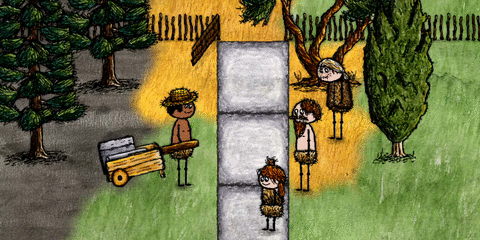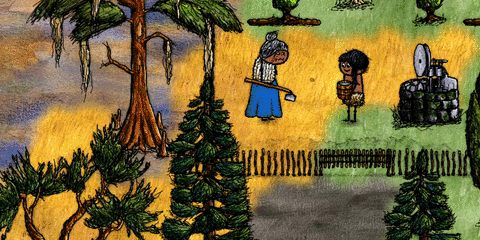Weekly Update #59

Language Learning
With the changes put in place last week, which brought distant families together, we're essentially playing a completely different game, with dynamics that we've never had in One Hour One Life before---dynamics, perhaps, that have never been seen in any other game either. There are going to be some growing pains, and some need for balancing.
Learning another family's language is an interesting new part of the game, and it shines a spotlight on age-old philosophical questions. How do we communicate with other people about abstract ideas? It's easy enough to point to something concrete, like a berry or a hammer, and come to a mutual understanding about what words we are going to use to signify this concrete thing. But what about things that we can't point to? Last week, a woman migrated to my village, and she tried to communicate her story of destruction and survivorship. As I tried to repeat these words back to her, it was pretty clear that we weren't making headway at understanding. It wasn't until she wrote her story down on paper, in our shared written language, that I finally understood---and understood the difficulty that we had been having using spoken words for these concepts.
I wanted to enable some kind of accelerated language learning in the game, but I didn't want to undercut the experience of trying to actually learn another language, one word at a time.
In the latest version of the game, accelerated language learning can happen, but only across multiple generations. Your babies have a chance to learn whatever parts of the language that they hear during their childhoods. They pass this partial learning on to their own children, who again have a chance to learn even more of the language during their own childhoods. After you grow up, whatever partial language understanding that you've acquired solidifies, and you carry it with you for the rest of your life. The result is almost like an accent that fades gradually over multiple generations.
And children and grand children, who have had more exposure to the foreign language, can serve as translators to the adults around them.
I've always been interested in the gap of understanding and communication between individuals---that's been a thread running throughout my work---and I've even made whole games specifically about that concept in the past. But this almost seems like the best exploration of that idea yet, and just as one tiny part of a much larger game. Thanks go to forum member Spiegel for planting the seed idea in the first place---that different families could potentially have different languages.
Beyond that, the sword has been rebalanced, Eve spawns have been tweaked, and baby bones for /DIE babies now decay away very quickly.





